This post may contain affiliate links. Where I make a small commission on purchased items, at no extra cost to you. See my disclosure for details.
Creamy, tangy and refreshing, this simple tzatziki recipe will help you make it perfectly in your very own home! Just like hummus, homemade is always best and this tzatziki dip is no exception. Read on for the easy step by step picture recipe, helpful tips and more…

I’m gonna level with you, I’m not actually a fan of tzatziki. Well, until now that is! To me, the shop bought versions are just awful. There’s no balance in flavour, the cucumber always tastes way too overpowering and they’re never my first choice in the world of dips.
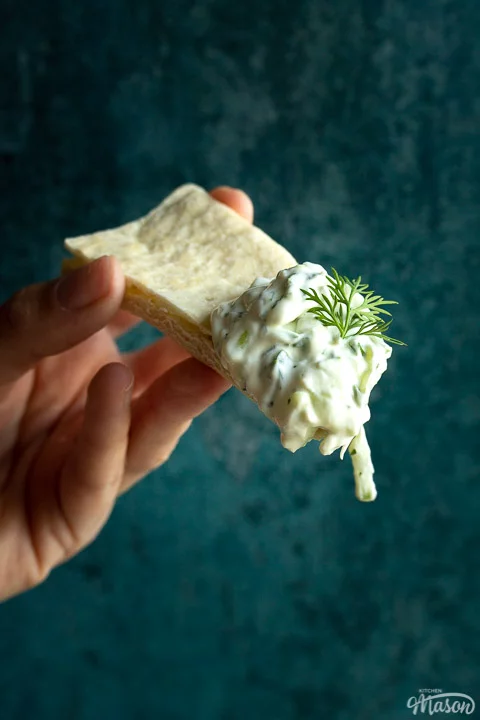
This tzatziki recipe however, really blew me away! It’s just the right amount of tang blended with a garlicky hit and a freshness that’s so lovingly expected from tzatziki. It’s just beautiful!
I had great fun developing this recipe for you and I hope you enjoy it as much as I do.
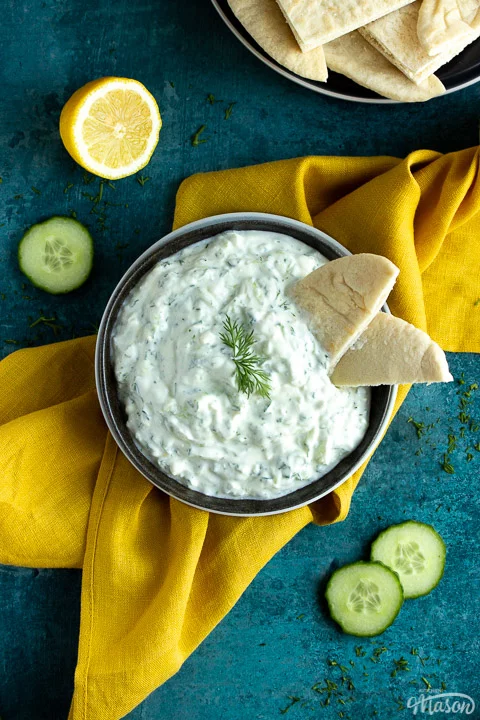
What does tzatziki taste like?
Tzatziki is a greek yoghurt dip/sauce. It’s main flavours are cucumber, garlic and either dill or mint. It tastes very fresh and tangy along with a slight creaminess from the yoghurt. Almost reminiscent of soured cream but bursting with lots of extra flavour.
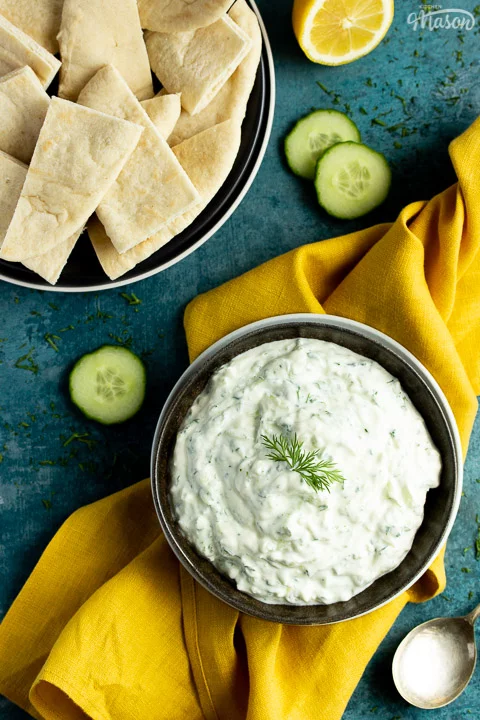
Is Greek tzatziki healthy?
Tzatziki is healthy for you yes. Greek yoghurt is low in fat and calories but high in protein so a perfect choice for a healthy dip. Cucumber and garlic are also plentiful in tzatziki, which is very good for you too. Just remember though, all things in moderation!
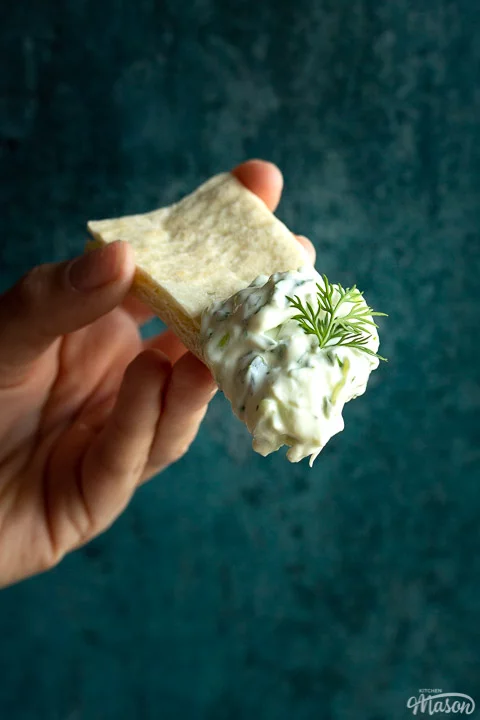
Is tzatziki good for weight loss?
It can be yes! If you use proper strained Greek yoghurt, it’s very high in protein and low in calories which is great for dieting. So long as you eat it in moderation of course!
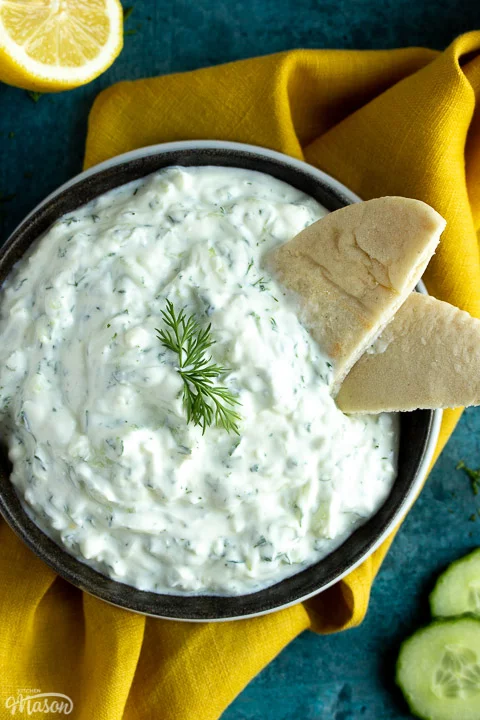
What goes well with tzatziki?
You can eat tzatziki with a whole heap of things! Here’s a few ideas…
- With warm pita bread
- As a sauce for meats
- On sandwiches
- With fish
- On Greek gyros or kebabs
- Dips for crisps/tortilla chips
- As a salad dressing
- A dip for vegetables or bread sticks
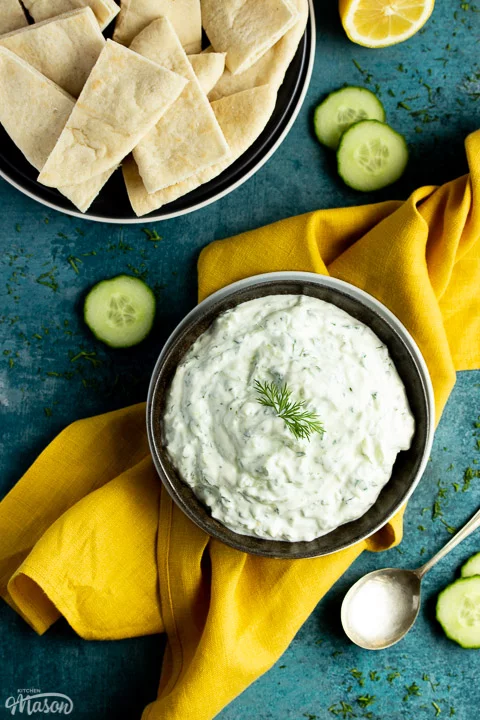
How long does homemade tzatziki last?
When stored in an airtight container in the fridge, homemade tzatziki will last a maximum of 3 days. That being said, it’s always best served on the day it was made. Despite being drained before adding to the dip, the cucumber can emanate even more liquid over time and turn your tzatziki watery.
You can, of course, carefully pour off any excess liquid that’s settled on top then give it a good mix. That should buy you the extra couple of days after the day of making.
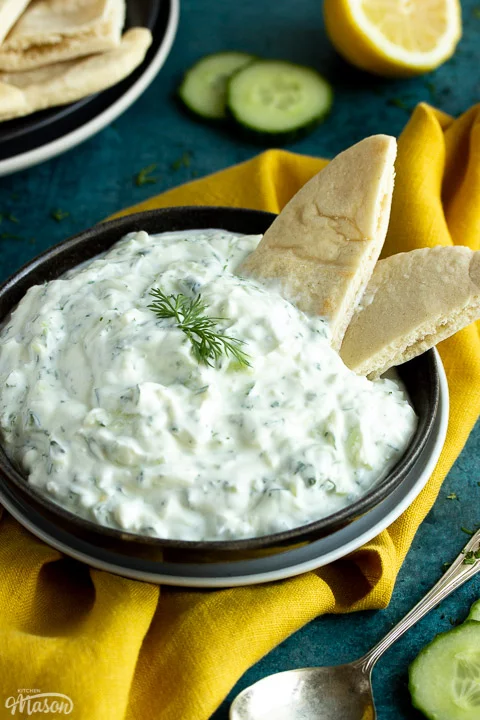
Tzatziki ingredients
Here’s all you need to know about the ingredients needed for this recipe…
- Cucumber – The fresher the better! It’s a key flavour in tzatziki. Don’t skip removing the seeds though, it makes a big difference!
- Garlic – Nice large cloves work best here. I like to really taste the garlic, otherwise, what’s the point?!
- Greek Yoghurt – If you can, use strained greek yoghurt (I use Fage brand). It’s extra thickness works very well in tzatziki.
- Lemon Juice – This acidity helps provide the balance you need for perfect tzatziki. Use freshly squeezed not bottled! You could also use white wine vinegar.
- Olive Oil – Just like the Greeks do, use the best quality olive oil you can afford. You’ll taste the difference.
- Salt – Without this, your tzatziki will taste very bland! I like sea salt but table would work just as well.
- Dill – You could also use mint but I prefer dill’s pickle like flavour. It works so well in creamy dips and sauces!
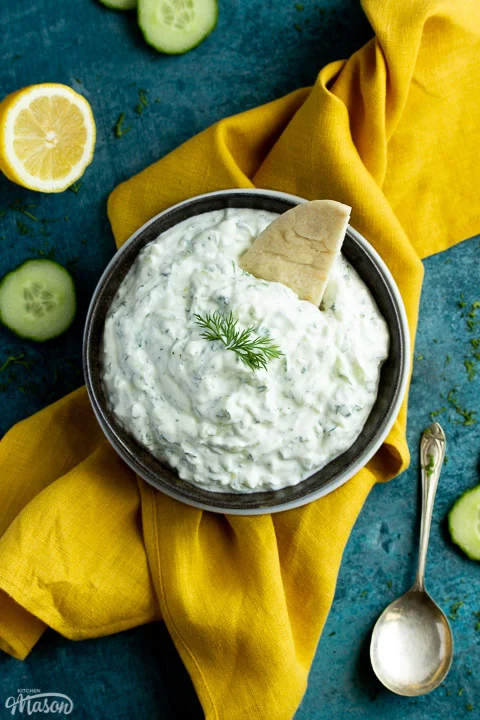
How to make tzatziki – recipe summary
It’s easy peasy! Here, I’ll show you…
- Halve, deseed and grate the cucumber.
- Place in a sieve set over a bowl and mix through some salt.
- Mince garlic then mix it together with Greek yoghurt, lemon juice, olive oil and salt in a bowl.
- Cover both the draining cucumber and yoghurt mixture and refrigerate overnight.
- Squeeze out any excess moisture from the cucumber.
- Add the cucumber and freshly chopped dill to the yoghurt and mix well.
- Serve immediately.
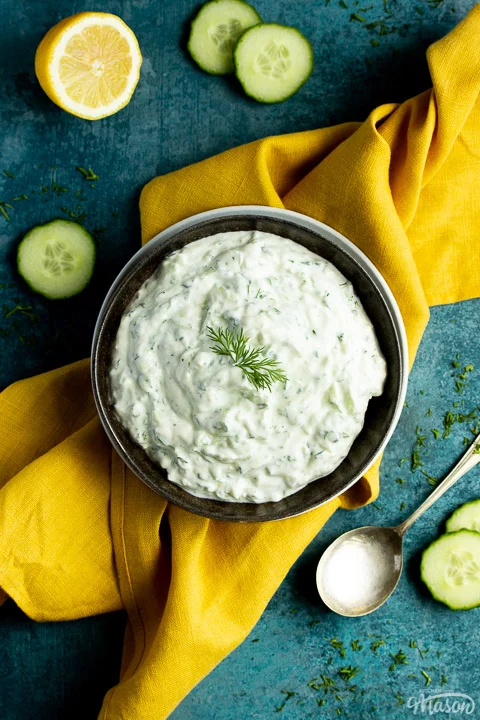
Tzatziki recipe tips
Still not 100% sure? Here’s a few helpful tips to ensure you make the best tzatziki possible…
- Removing the seeds is crucial for texture. I wouldn’t skip this step if I were you.
- Do NOT skip draining the cucumber or your tzatziki will be very watery!
- Don’t forget to salt the cucumber, it’s important! This will help to draw out the moisture.
- Don’t have a lemon? You can use white wine vinegar instead.
- Tzatziki is best served on the day it’s made. After this, the cucumber will begin to leak more water.
- Can’t get hold of dill? You can use mint instead.
- Make sure you use fresh herbs and not dried. It will make a huge difference to the flavour.
- Add the dill right before serving.
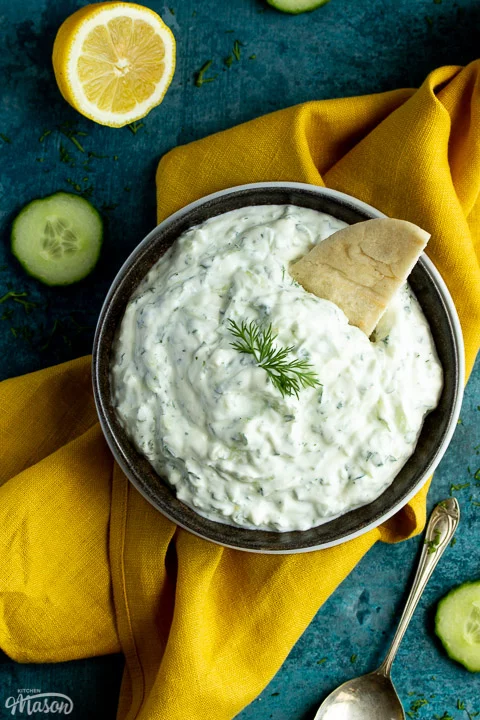
Other recipes you might like…
- Perfect homemade hummus (houmous)
- Quick and easy guacamole recipe
- The best homemade sweet chilli jam
- How to pickle beetroot
- How to pickle onions
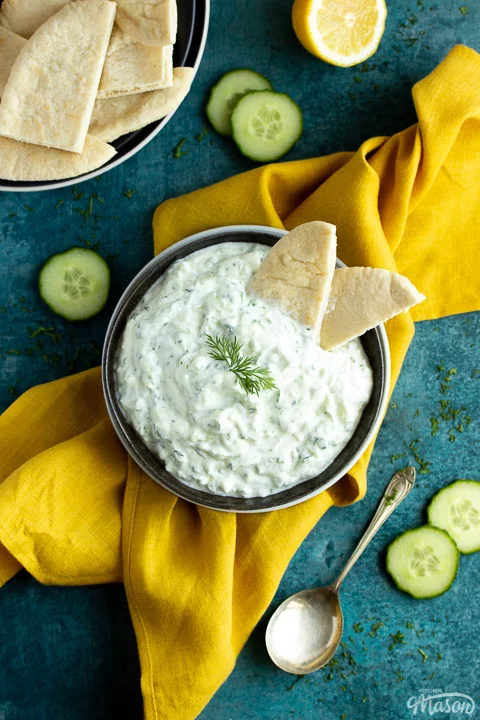
Perfect Homemade Tzatziki – Step by Step Recipe
Please note that this recipe begins the night before it’s needed.
(For a printer friendly version, see the recipe card at the end of this post)
Here is what you will need to make about 500ml (2 Cups).
Ingredients
- 1/2 a Cucumber
- 280g (1 + 1/2 Cups) Strained Greek Yoghurt
- 2 Large Garlic Cloves, minced
- 1 tbsp Lemon Juice
- 2 tbsp Olive Oil
- 1/2 tsp Salt
- 1 heaped tbsp Fresh Dill, chopped
Essential equipment
- Sharp Knife
- Chopping Board
- Spoon
- Grater
- Sieve
- 2 Bowls
Advanced preparation
First, prepare your cucumber (1/2). Using a sharp knife on a chopping board, halve the cucumber down the middle, then scrape the seeds out using a spoon.
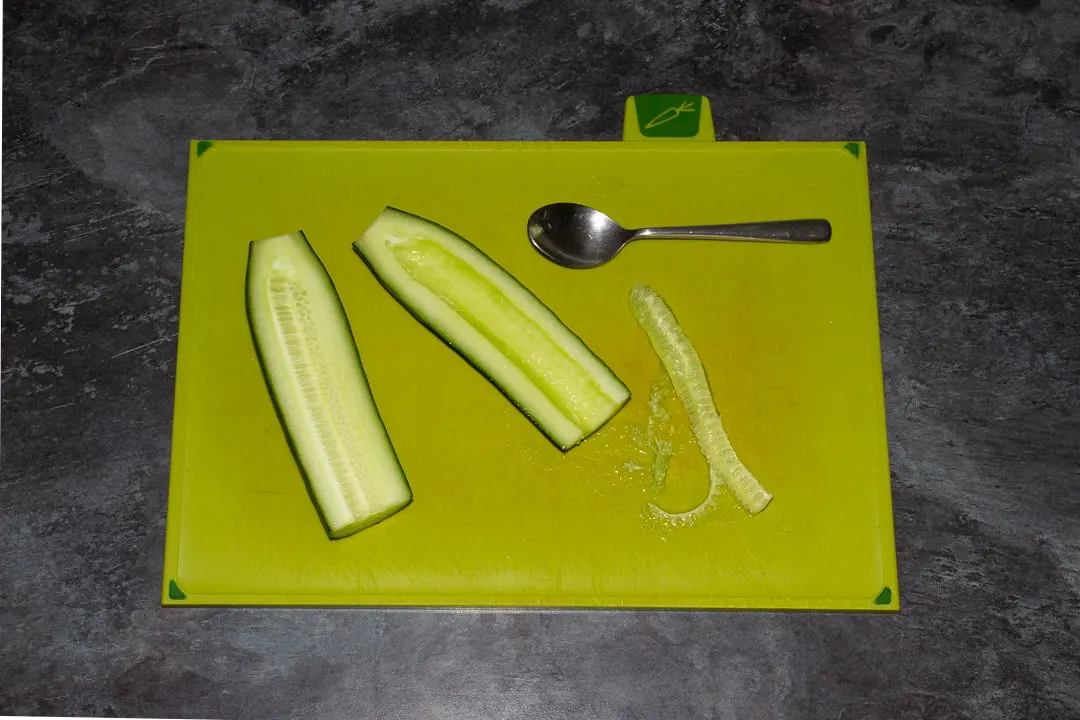
Next, grate the cucumber and place it into a sieve set over a bowl. Add a little salt and mix it through. (This will help to pull out the excess moisture.)
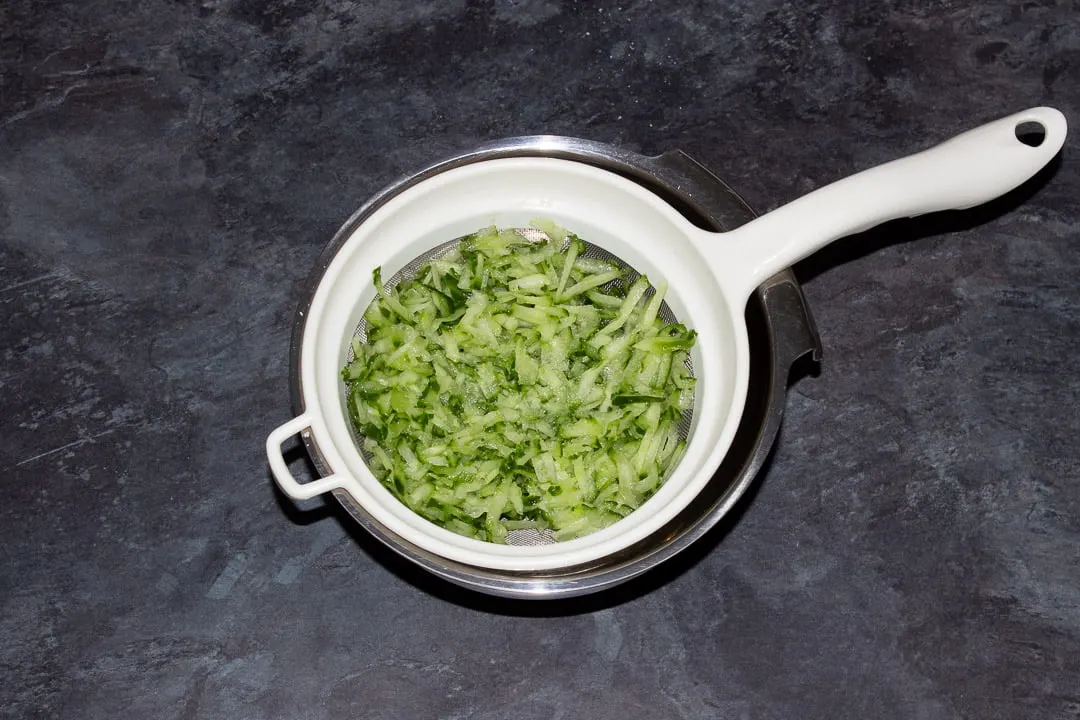
Then add all the remaining ingredients, except for the dill, into a bowl. (280g | 1 + 1/2 Cups strained Greek yoghurt, 2 x minced large garlic cloves, 1 tbsp lemon juice, 2 tbsp olive oil, 1/2 tsp salt.)
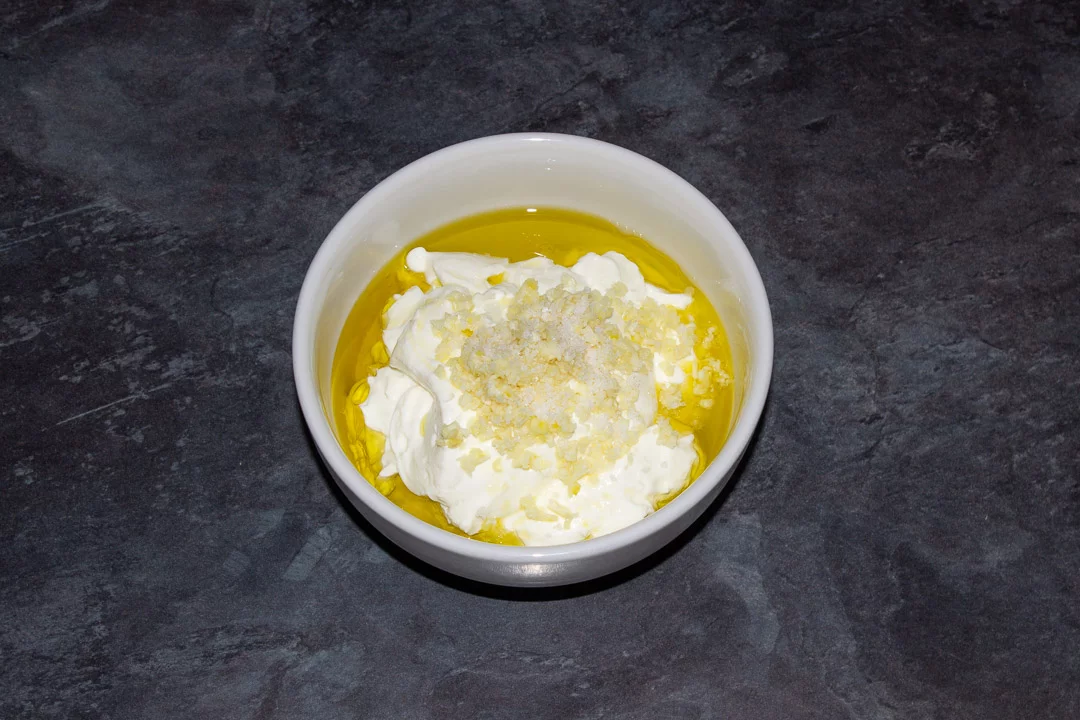
Give them all a really good mix until everything is evenly blended.
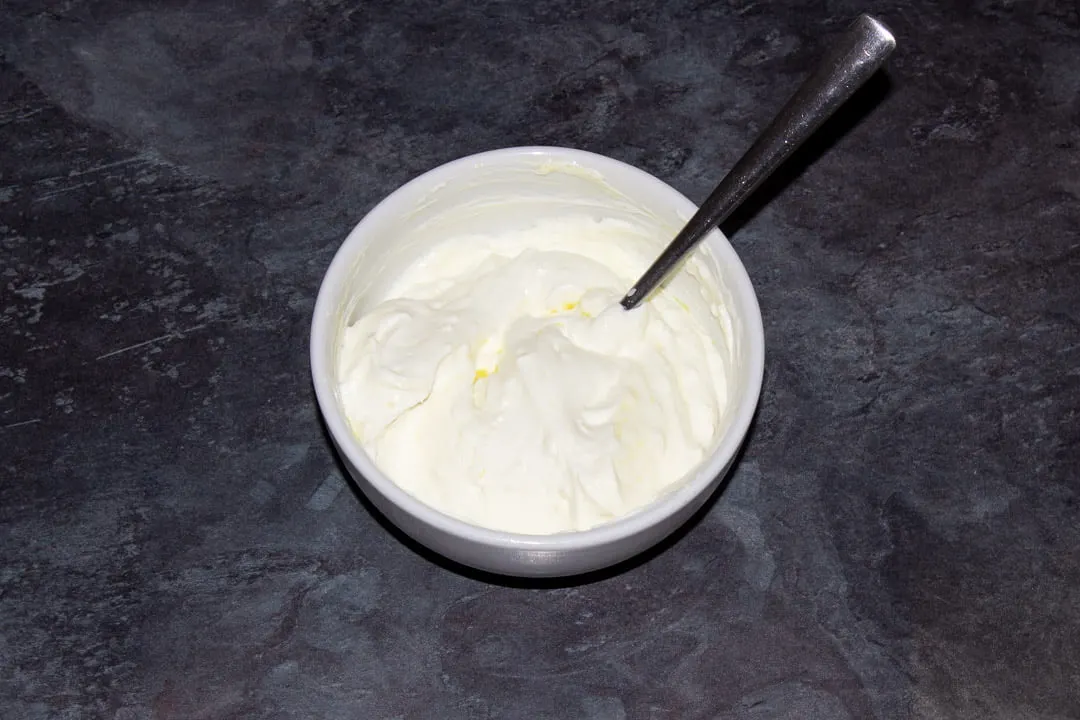
Now cover both the yoghurt and the cucumber in cling film and refrigerate for at least 3-4 hours. Overnight is even better if you can!
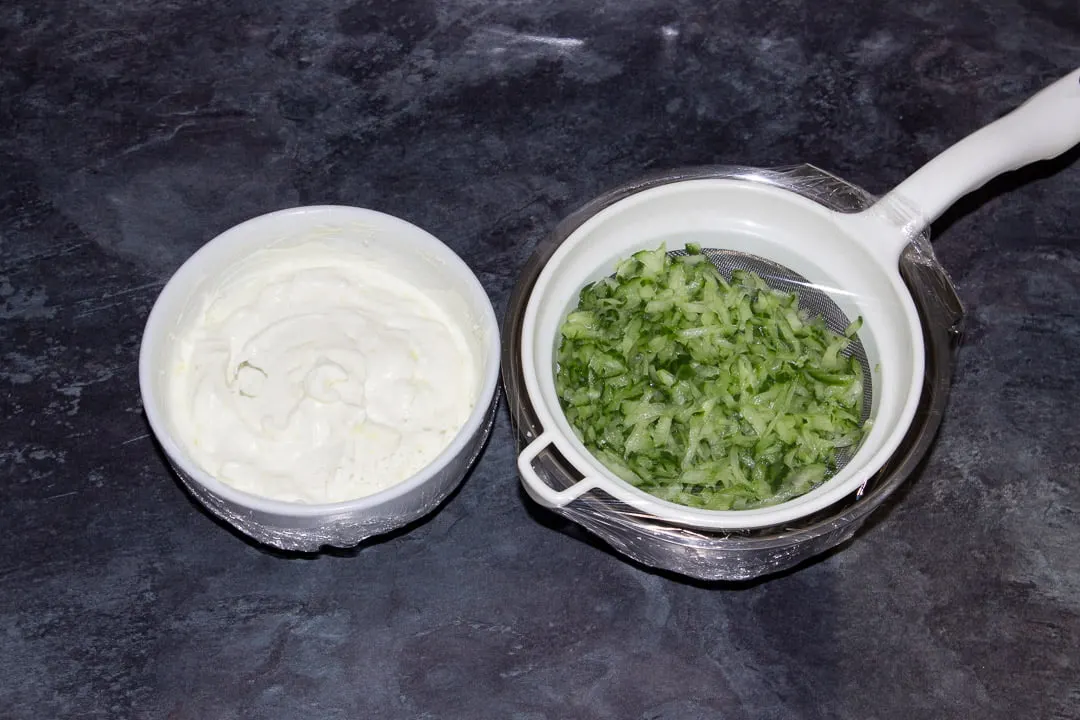
This will allow the garlic flavour to mellow a little and the cucumber to expunge a lot of it’s juices. Here, take a look…
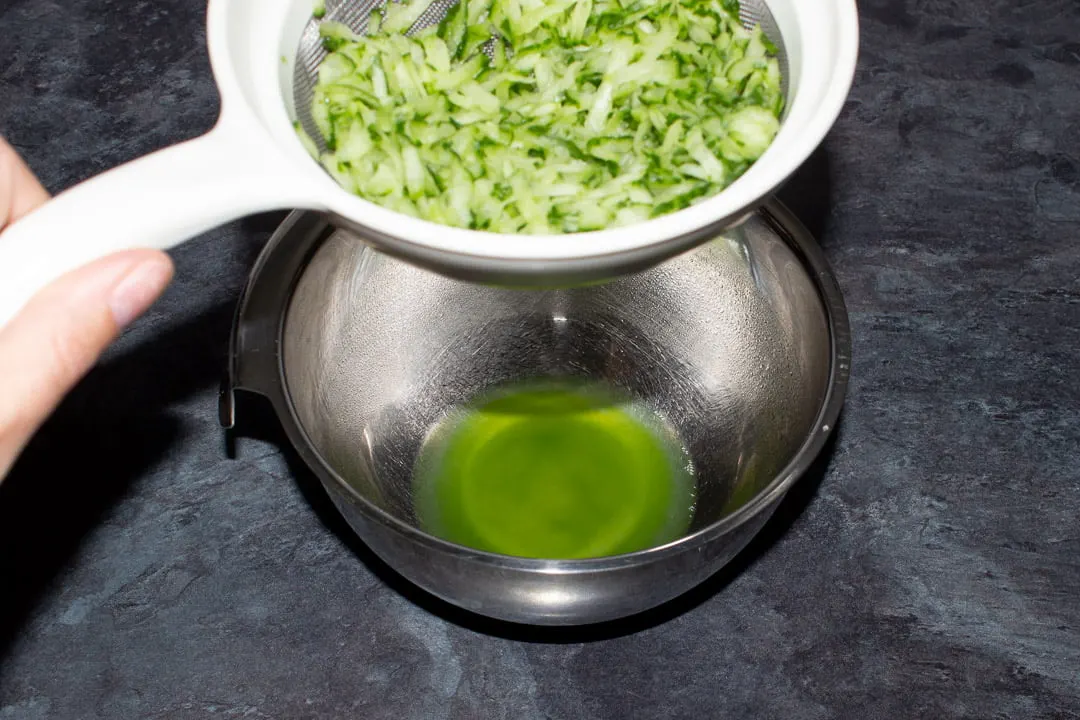
See how much liquid came out that cucumber?!
Instructions
Give it a good, final squeeze through the sieve to get rid of any leftover liquid then add it to the yoghurt.
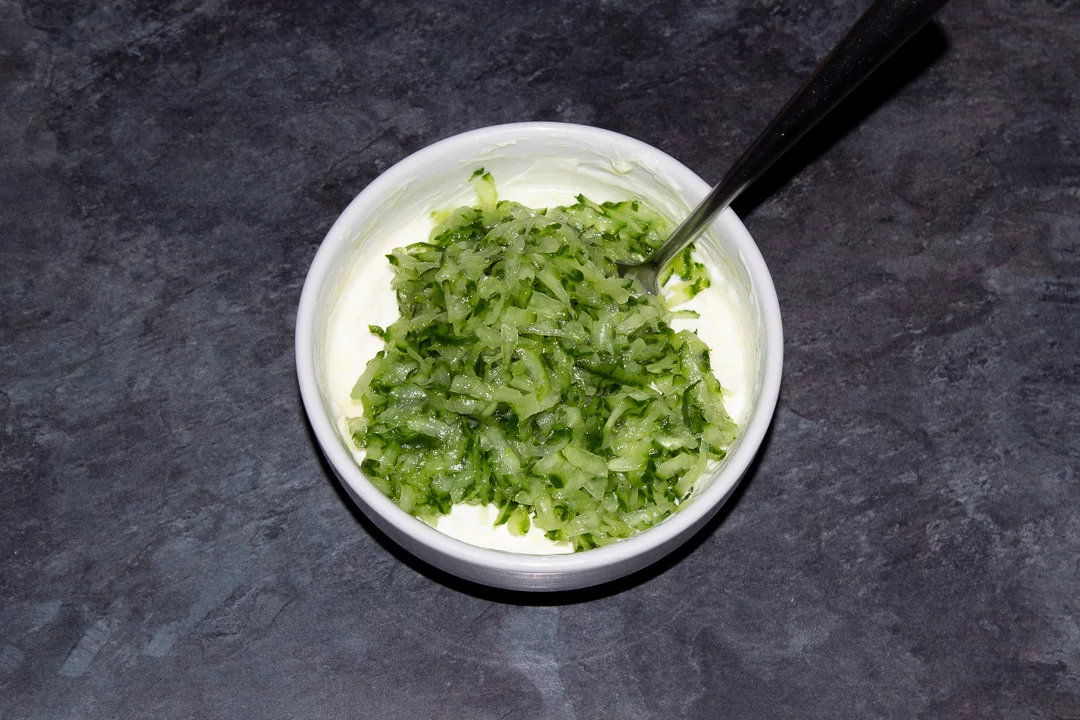
Stir it through until evenly distributed…
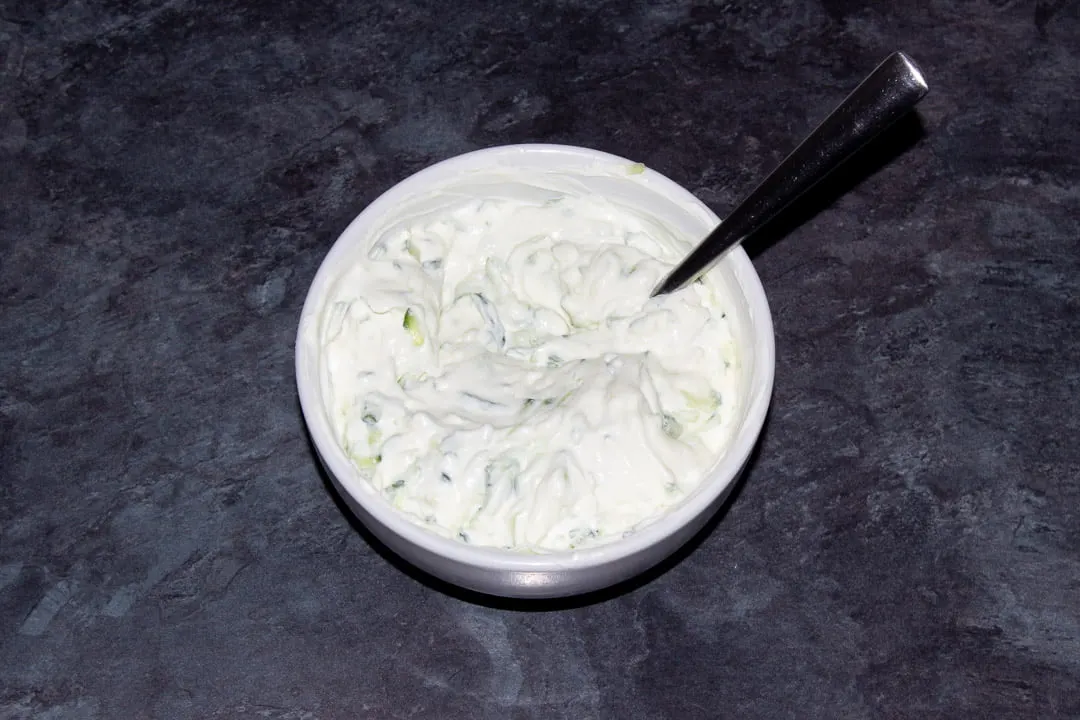
Now it’s time for the final ingredient. Add the freshly chopped dill (1 heaped tbsp) and give it one last good mix through.
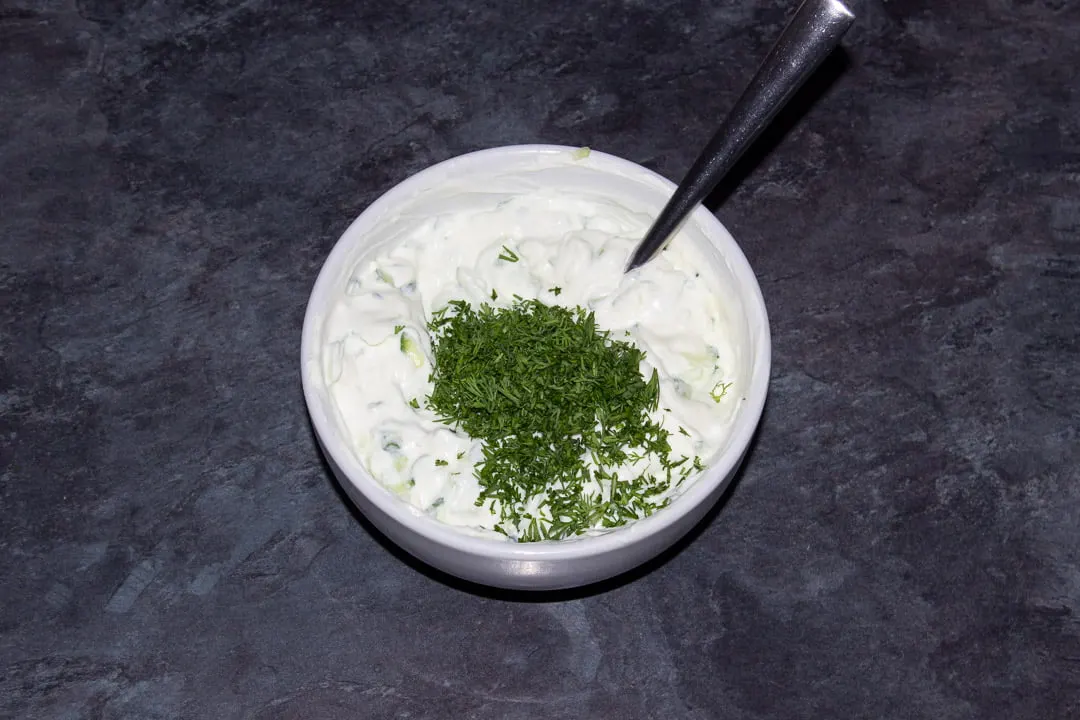
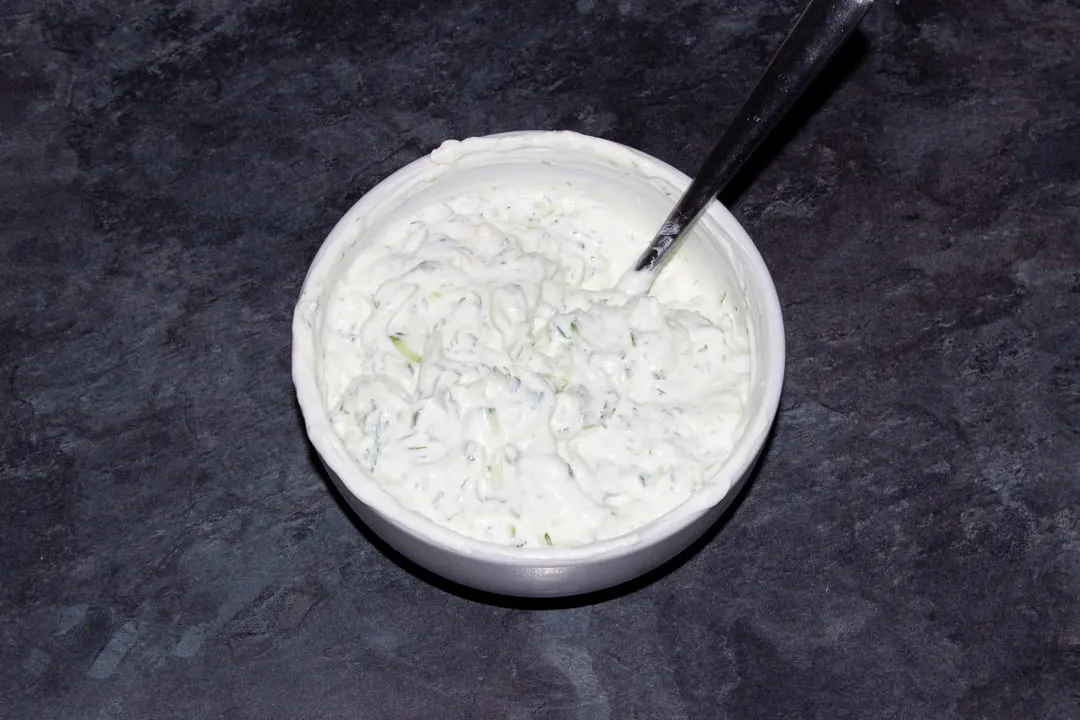
And there you have it… The most perfect homemade tzatziki in all the land. Even the Greek’s would be proud of you!

How to store homemade tzatziki
Homemade tzatziki is best eaten on the day it was made. However, store any leftovers in an airtight container and consume within 3 days. The cucumber may begin to seep liquid again. If this happens, carefully pour away any that has settled on the top then mix through thoroughly.
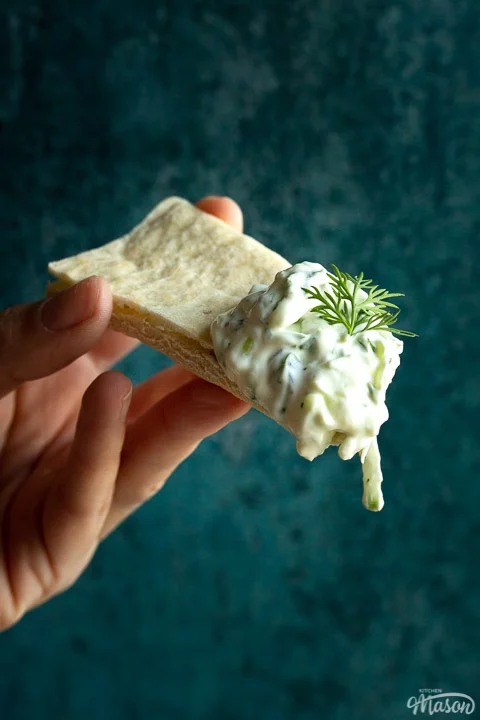
Have you made this recipe?
Have you tried this beautiful tzatziki recipe? I’d love to know if you have! Send me your pics, comments and questions on Facebook, Twitter and Instagram or email me at emma@kitchenmason.com.
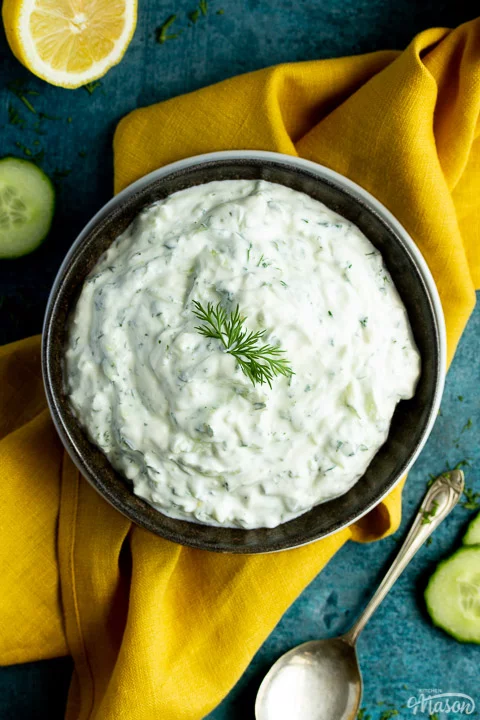
Loved this recipe? Pin it!
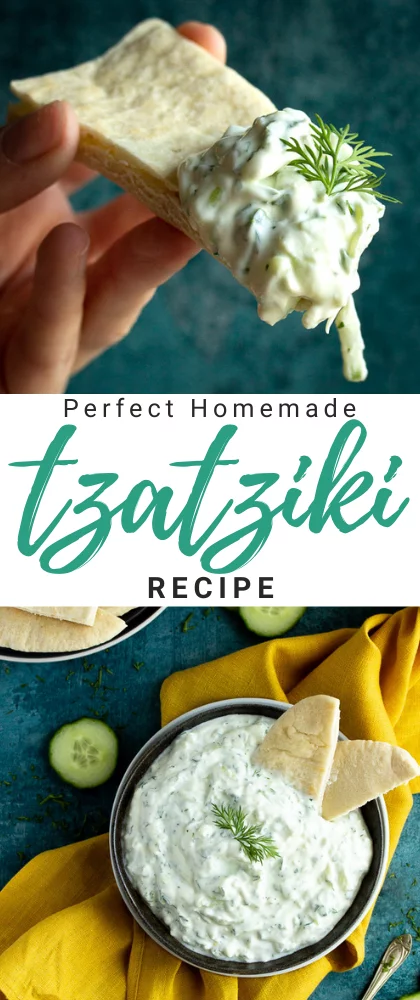
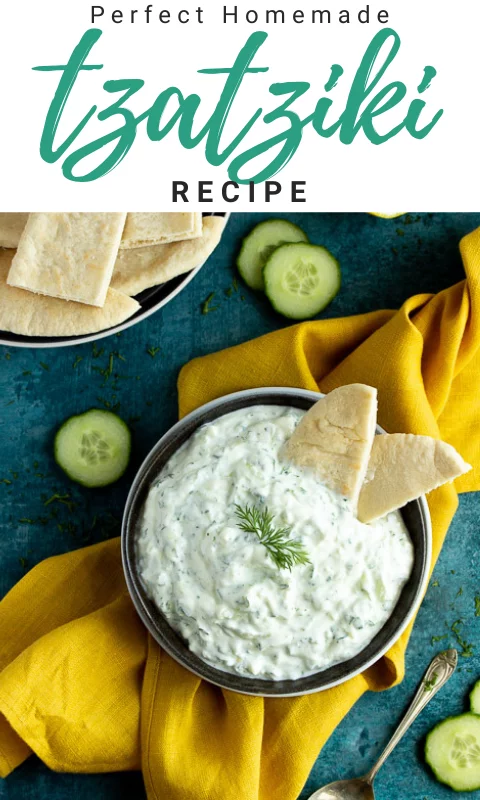
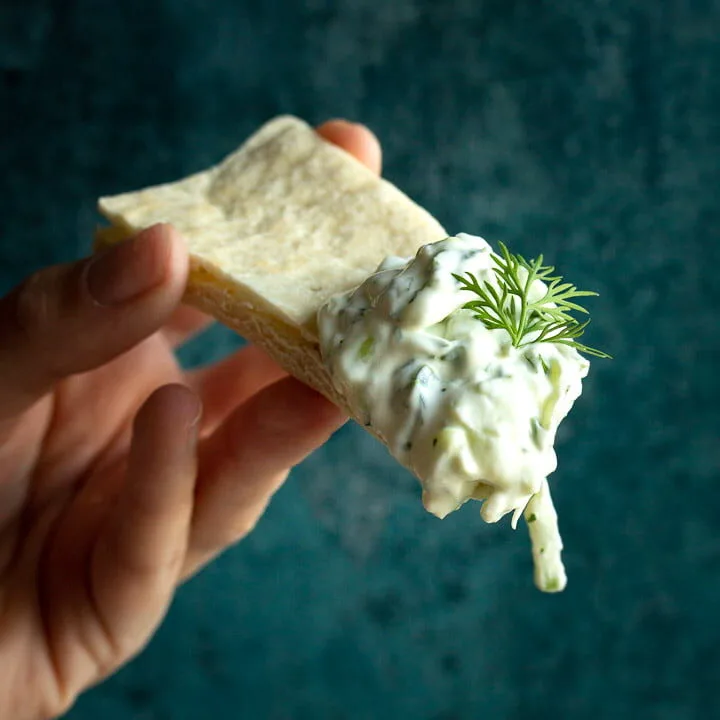
Perfect Homemade Tzatziki - Printable Recipe
Tangy, creamy and refreshing, this perfect homemade tzatziki is a recipe you will impress with time and time again!
Ingredients
- 1/2 a Cucumber
- 280g (1 + 1/2 Cups) Strained Greek Yoghurt
- 2 Large Garlic Cloves, minced
- 1 tbsp Lemon Juice
- 2 tbsp Olive Oil
- 1/2 tsp Salt
- 1 heaped tbsp Fresh Dill, chopped
Essential Equipment
- Sharp Knife
- Chopping Board
- Spoon
- Grater
- Sieve
- 2 Bowls
Instructions
- Halve the cucumber lengthways with a sharp knife on a chopping board. Scrape out the seeds with a spoon then grate it.
- Place it into a sieve set over a bowl and mix through a little salt. Cover in cling film.
- Place all the remaining ingredients (except for the dill) into a bowl and mix well. Cover with cling film.
- Place the cucumber and yoghurt into the fridge for 3-4 hours. Overnight is better.
- Squeeze out any extra liquid that remains in the cucumber then mix it through the yoghurt.
- Add the chopped dill and give it a final stir through.
- Serve immediately.
Notes
PLEASE NOTE THE ADVANCED PREPARATION REQUIRED FOR THE THIS RECIPE
Store leftover tzatziki in an airtight container in the fridge and consume within 3 days. If any excess liquid appears on top, carefully drain it then mix thoroughly.
Nutrition Information:
Yield: 16 Serving Size: 1Amount Per Serving: Calories: 28Total Fat: 2gSaturated Fat: 0gTrans Fat: 0gUnsaturated Fat: 1gCholesterol: 1mgSodium: 85mgCarbohydrates: 2gFiber: 0gSugar: 1gProtein: 1g
Nutritional information on kitchenmason.com should only be used as a general guideline, I am not a certified nutritionist. Please always check labels for allergens where applicable.
